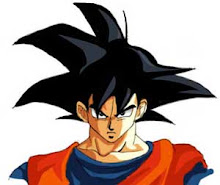What's really going on when we're stretching? Way down deep inside the muscles you wonder...
The two proprioceptors (sensory receptors) that play the major role in stretching are: muscle spindles and golgi tendon organs (GTOs).
Muscle spindles live within the muscle fibres (that's their crib) and their 24hr job is to text (send msgs) from the muscle to the CNS to inform it about their state of stretch (like a non stop telephone salesman trying to inform you about their great deals).
When the muscle is stretched the muscle spindle is stretched and distorted (as it's coiled around the fibres). This distortion of the muscle spindle causes the myotatic reflex (stretch reflex) or automatic contraction to occur, a protective mechanism to avoid damage to the muscles fibres through over-stretching.
The two proprioceptors (sensory receptors) that play the major role in stretching are: muscle spindles and golgi tendon organs (GTOs).
Muscle spindles live within the muscle fibres (that's their crib) and their 24hr job is to text (send msgs) from the muscle to the CNS to inform it about their state of stretch (like a non stop telephone salesman trying to inform you about their great deals).
When the muscle is stretched the muscle spindle is stretched and distorted (as it's coiled around the fibres). This distortion of the muscle spindle causes the myotatic reflex (stretch reflex) or automatic contraction to occur, a protective mechanism to avoid damage to the muscles fibres through over-stretching.
"This triggers the stretch reflex which attempts to resist the change in muscle length by causing the stretched muscle to contract."
That feeling of tension in the stretch is that muscle spindle activation occuring. An important fact to remember: The amount and rate of contraction elicited from the stretch reflex is proportional to the amount and rate of stretching
(This is the principle plyometrics or 'jump training' is based on)
So the faster and more forceful you stretch, the faster and more forceful the reflex contraction of the stretched muscle will be (this is where tears are likely to occur usually in an untrained muscle). Every action has an equal and opposite reaction (just like Newton's 3rd Law).
This is one of the reasons why it's advised that when stretching you slowly progress into it at a low load. Stretching a muscle for an extended period of time begins to 'habituate' the muscle spindle to the new length i.e. it becomes accustomed to the new length and reduces signaling (less frequent txt msgs from spindle to CNS) will show as less discomfort.
Some research suggests that with extensive training, the stretch reflex of certain muscles can be controlled to a point where there is little or no reflex contraction in response to a sudden stretch.
This might provide an opporunity for the greatest flexibility to be achieved but also the greatest risk of injury. Essentially this training is turning off that protective mechanism which prevents the risk of muscle tear from over-stretching.
It's very important that when stretch training once a new elongation has been achieved, neuromuscular training should be done to ensure a patient/client develops neuromuscular control of that new length to avoid the risk of injury.



Loved it! Thanks for sharing.
ReplyDelete